Two and a half years and a world pandemic after the original presentation, the Giro will finally come to Budapest for its Grande Partenza. Fascists always cry about the politics have to be left out of the sport, but then this year Corsa Rosa will start in Orban’s Hungary, with the first stage finishing in Visegrad, a well-know city that gives the name to a group of altright-wing countries, will pass through Salò, the capital of the fascist Republic born in Italy in 1943, and will finish in Verona, the most fascist city of the whole Peninsula. Fortunately, Piazzale Loreto is big enough. Politics has always been part of the sport, used by every type of regime, above all in cycling, a really scenic and geographical (and so geopolitical) sport. Just think about the first editions of the Tour de France where the organizers went to Alsace and Lorraine now and then, even before WW1. Just need to use sport for better political instances. On a more technical note, the route is pretty bad, with a ridicolous amount of ITT km (26,6 km, the lowest number since 1962. Just to give an idea, the average since 2000 was 59,88 km – data from @ammattipyoraily), a bad design of some of the stages, and a bad order of these above all, together with their lenght. In fact, the medium mountain is great this year (Potenza, Torino and Castelmonte routes are brilliant), the problem is usually its position in the race, possibly leading the riders to wait and waste those opportunities. Still, not everything is bad and a great show is possible. Hope the riders will help.
Stage 1 – Budapest > Visegrad **
Stage 3 – Kaposvar > Balatonfured *
Stage 5 – Catania > Messina **
Stage 7 – Diamante > Potenza ****
Stage 9 – Isernia > Blockhaus *****
Stage 11 – Santarcangelo di Romagna > Reggio Emilia *
Stage 14 – Santena > Torino ****
Stage 15 – Rivarolo Canavese > Cogne ****
Stage 16 – Salò > Aprica *****
Stage 17 – Ponte di Legno > Lavarone ****
Stage 18 – Borgo Valsugana > Treviso *
Stage 19 – Marano Lagunare > Castelmonte ****
STAGE 1 – Budapest > Visegrad
195 km **

A road stage to start, an hill-top finish to decide the first maglia rosa. A flattish route that should give nothing for the show but stress and eventually crashes. After coasting the Danube for a few kilometers on a wide road, the riders will turn right heading towards Visegrad castle, approaching the final climb at a sensible speed, just like a sprint to an immaginary finish line. The ascent is 4,1 km at 4,9%, just on the limit for a lot of riders. Puncheurs will be the favourites, with a man above all, a certain Mathieu van der Poel, the tough sprinters will try to survive but could be a bit too long for them.

STAGE 2 – Budapest ITT
9,2 km ***
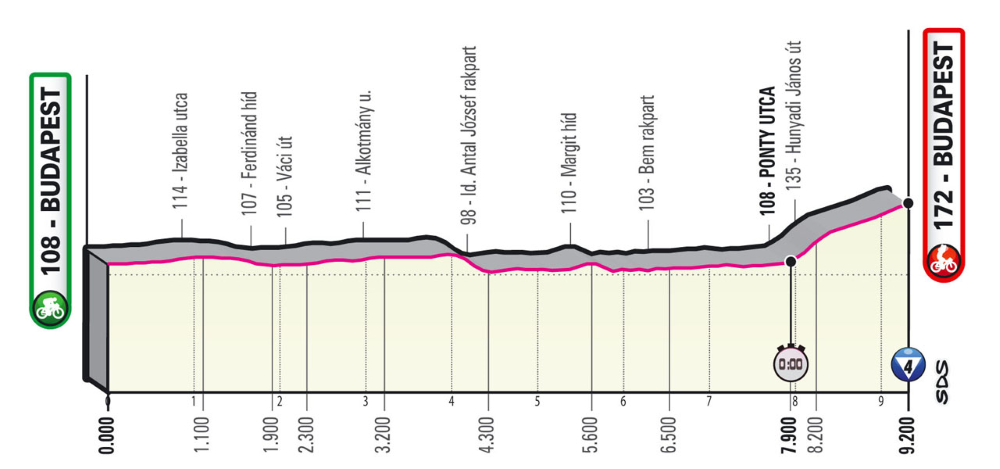
First ITT of the race, 9,2 of the 26,6 kilometers of this edition. The route is quite technical, not really one for monster engines, with not less than 27 turns on the streets of Budapest. The city is beautiful and after the finish will be able to watch it from the hill of Matyas Templom, but to reach that view they will need to climb 1,3 km at 4,9%, with the first steep 300 meters at 9,3% average and ramps up to 14% on pavé surface. Nice finish.
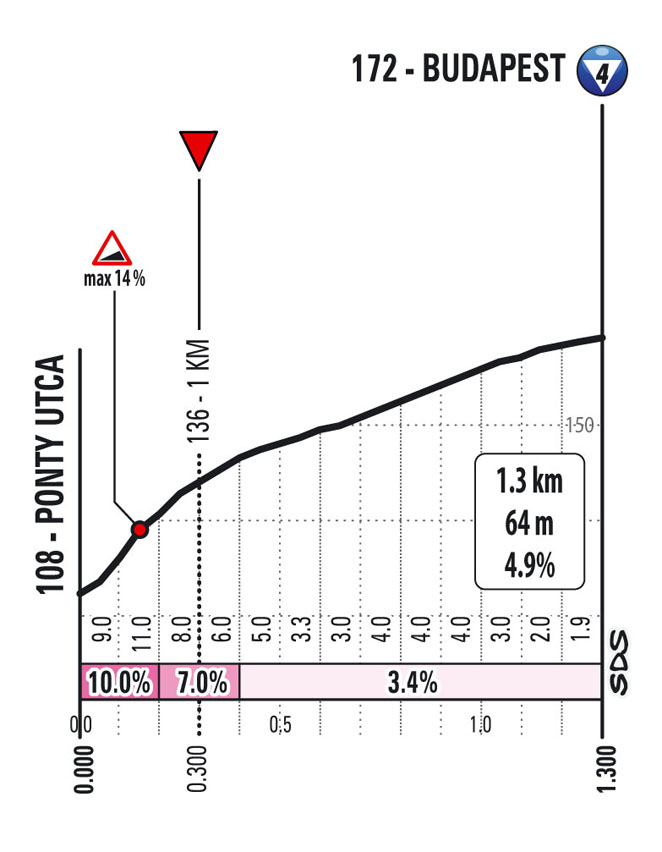
STAGE 3 – Kaposvar > Balatonfured
201 km *

Lake Balaton and the sprinters will be the big stars on the long and flat route of the third stage. Nothing much to say, the only GPM of the day (Tihany, 2,7 km at 2,5%) is not even a climb and will be topped with 12,6 km to go. The finale is quite straight-forward and easy, unusual for Giro crazy sprint finishes.

STAGE 4 – Avola > Etna
172 km ****

After the rest day and the travel to Italy, the race will restart with the first MTF of this edition, again on the Sicilian volcano. Since its come back in 2011, it has been used and abused, this will be 5th finish in 11 years (2011, 2017, 2018, and 2020 before – infographic). Always with the same scenario, a single-climb stage, while it gives the possibility to use it for way more, a descent-finish too – profile of an option. The first 50 km are pretty rolling, good for a strong breakway to go away and never get caught. It would not be the first time for the first MTF of the race, and Etna too (happened with Polanc in 2017, Chaves in 2018, and Caicedo in 2020). The road will start to slowly ascent from 40 km to the finish line, but things will get serious “only” in the last 23 km. 22,8 km at 5,9% on a narrower road then usual. A section, the steepest one, is almost identical to the one used in 2018, where Simon Yates dropped everyone, but this time they will go all the way to Rifugio Sapienza, like in 2011. The most probable scenario is a group ride from the favourites.

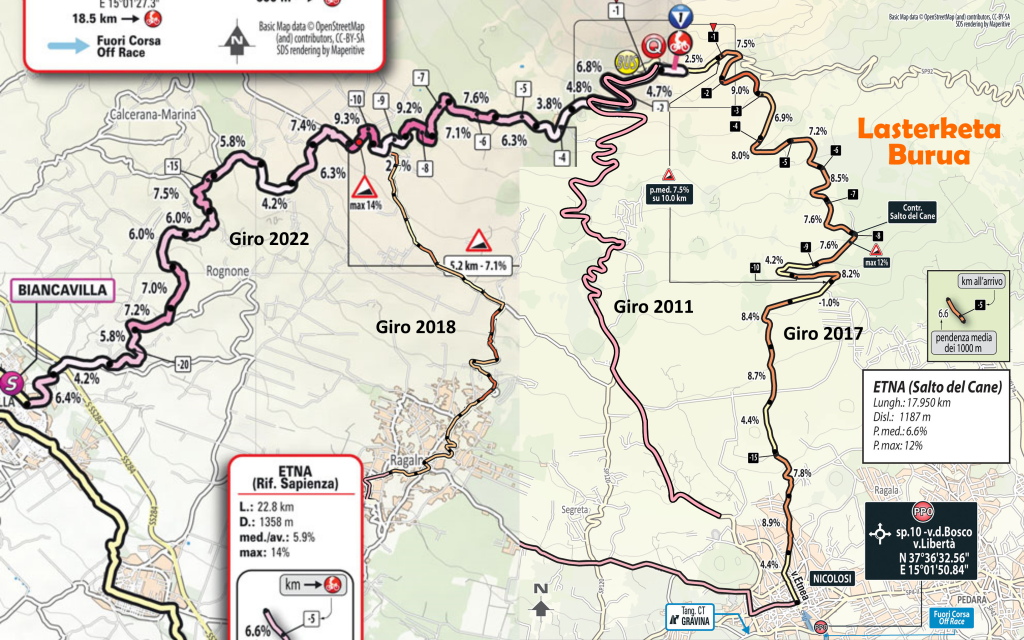

STAGE 5 – Catania > Messina
174 **
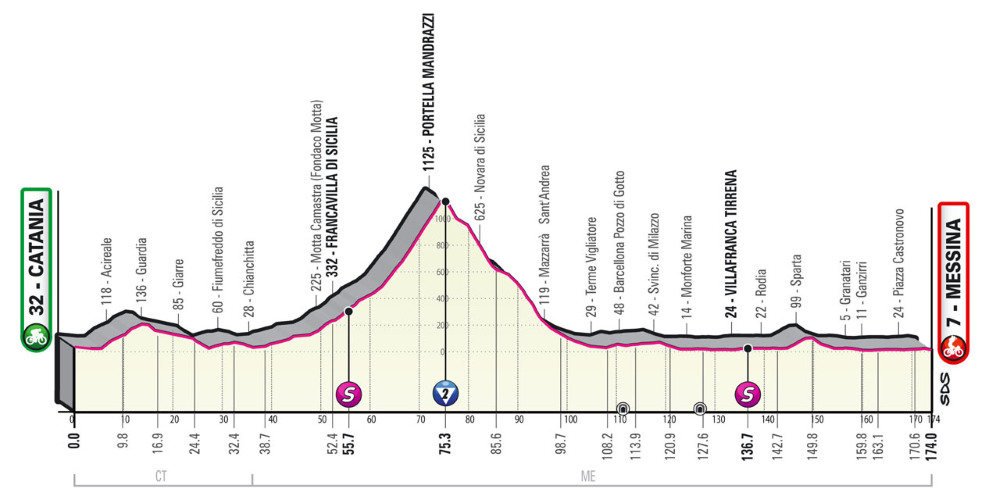
Almost a remake of the Catania > Villafranca Tirrena of Giro 2020, RCS creativity at its best. The looong and steady Portella Mandrazzi (19,5 km at 4,1%) shouldn’t scare too much the sprinters, even if in 2020 Sagan’s Bora managed to drop Gaviria and Hodeg there (results). The top will come 100 km from the finish line, you really need to be committed to create something. A mass sprint is the most probable option. The finale is not super straight-forward, with a couple of complicated turns inside the last 2 km, the last one with 800 meters to go.
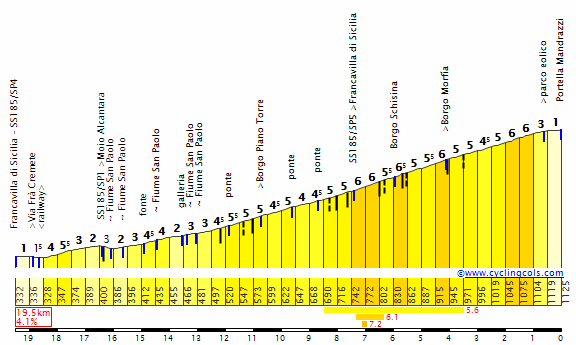
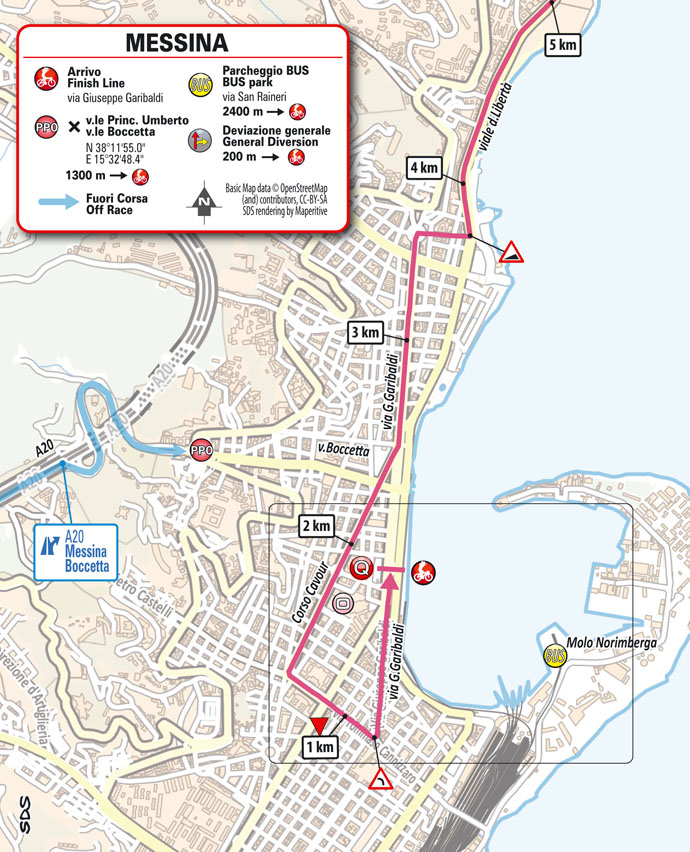
STAGE 6 – Palmi > Scalea
192 *


The peloton will reach the Peninsula with an almost pancake-flat stage all along Calabrian coast. In every GT, when there is a stage like this, we all talk about echelons possibilities, wind and things like that, but experience says us that this never happens in the Giro. Some bumps along to way to Scalea, the last one with 35 km to go, won’t stop the sprinters to fight for the win. It will be a continous straight line of 40 km on a wide road, not exactly the most technical finish ever.
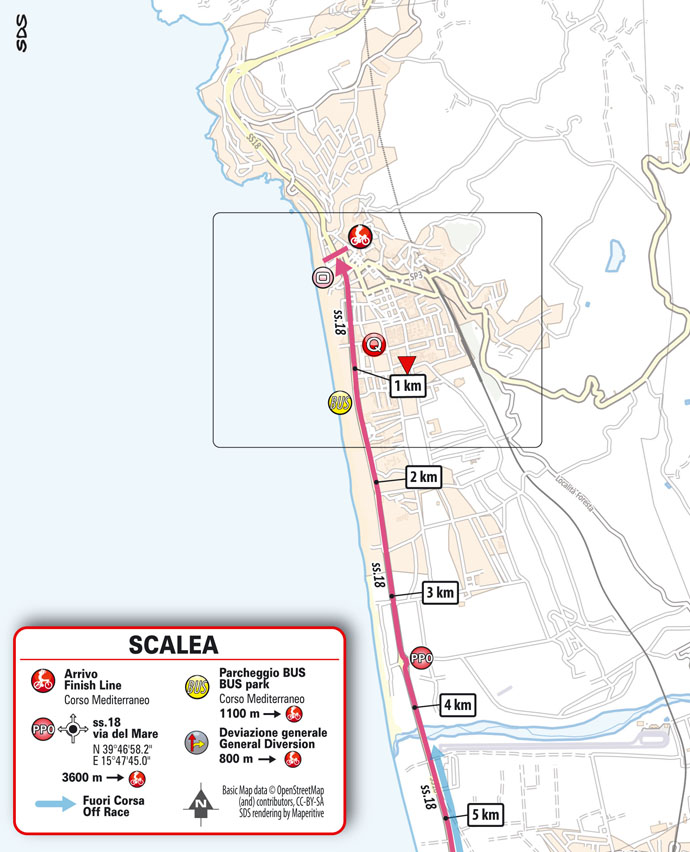
STAGE 7 – Diamante > Potenza
196 ****


This stage is why we all love the Giro. 196 km between Diamante and Potenza almost without a single meter of flat terrain. The breakaway artists will sense blood and go on the attack, but the hard terrain right from the gun favours even a fuga bidone, with some GC guy that could try his luck on a big group. Passo Colla (9,3 km at 4,5%) will in fact begin just after 36 km, there the legs will be the key. But it will just be an appetizer for the gigantic Monte Sirino, officially it’s 24,4 km at 3,8%, but in reality it’s 33 km of very irregular climbing, with some demanding sections in the middle. Fast descent and then up to third climb of the day, even if it’s not a GPM, Viggiano (4,3 km at 6,8%). It will not take long to takle the fourth, the real big star of the stage: 6,6 km at 9,1%, that’s where the action should happen. Difficult to see the GC rider moving there if it’s not a wet and dantesque day, but it’s great to dream and the terrain is fantastic. It will be topped with 60 km to go. Sellata will be the last GPM (7,8 km at 5,9%), steady, without any steep gradient, but a factor for the whole stage will be the schizofrenic design of the roads, a classic in this part of Italy, with lot of twist and turns. There will still be two other difficulties towards the finish line: a 1,3 km at 7,3% ascent on the city streets of Potenza, followed by a short final rise, 350 meters at 8%, that will decide the winner. The fight for the success should be really a thriller. Really a brilliant route. Finally.


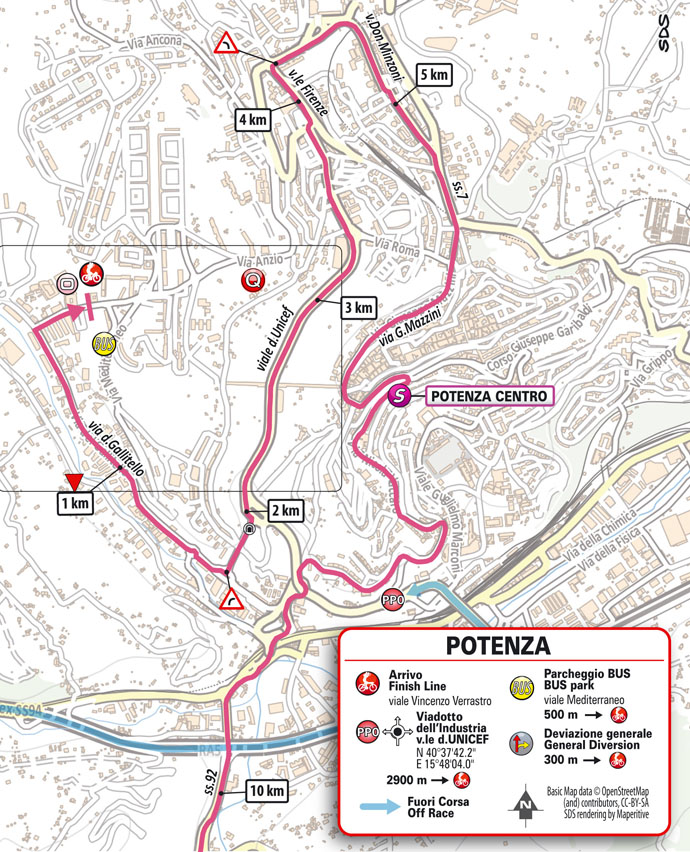
STAGE 8 – Napoli > Napoli
153 **

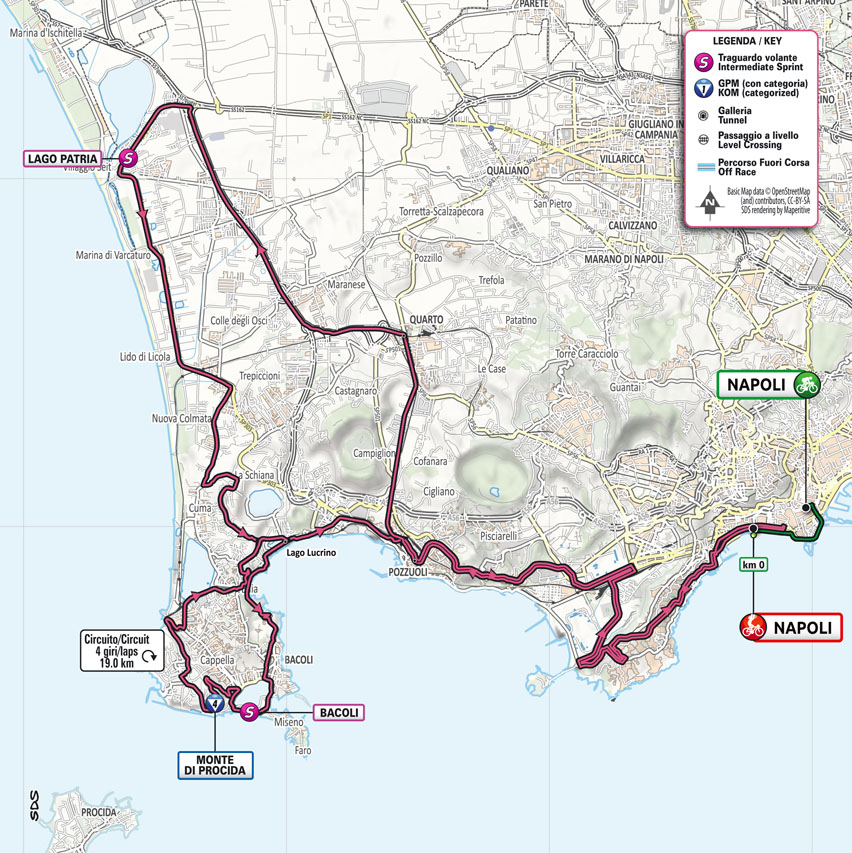
A weird stage around Napoli, really difficult to read. A sprint? A breakaway? A finisseur attack? Whatever the scenario, the riders will pray for a sunny day, everyone knows that when it rains in this part of Italy, it would be easier to ride over soap. Four laps of Monte Procida (2,1 km at 6%) circuit will probably decide the faith of this stage, with Baia dei Cesari hill (700 m at 10%) in the loop too. Last GPM will come with still 39 km to ride, but two other uncategorized ascents awaits the riders, with the last one that will be topped with only 7 km to go (2,9 km at 5%, with the first 1,4 km st 6,4%). The finale will be on the Lungomare, with one of Napoli’s best views, with Castel dell’Ovo in front of the magnificent Vesuvio.
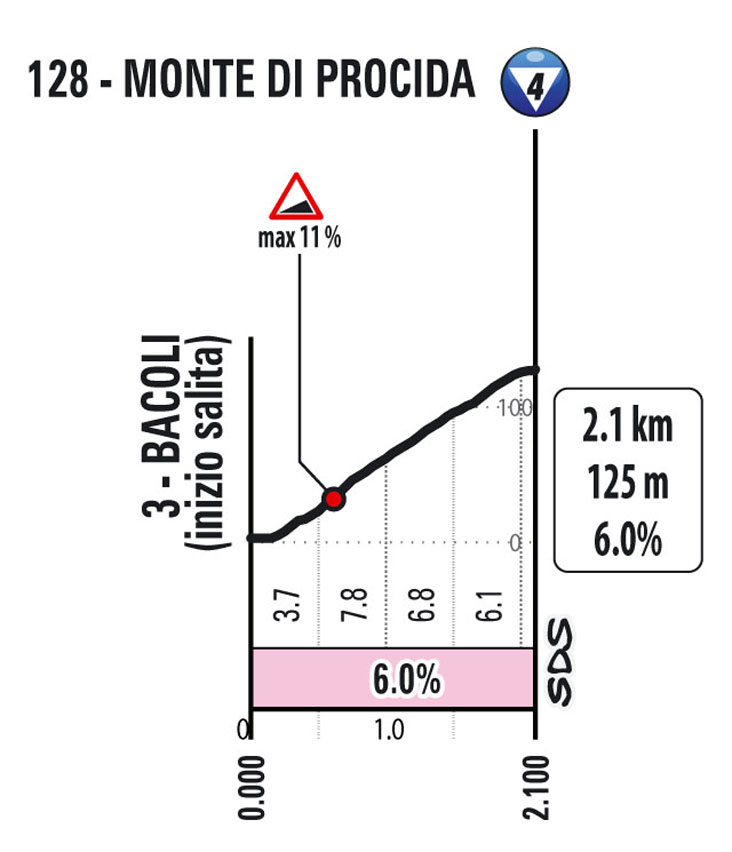

STAGE 9 – Isernia > Blockhaus
191 km *****
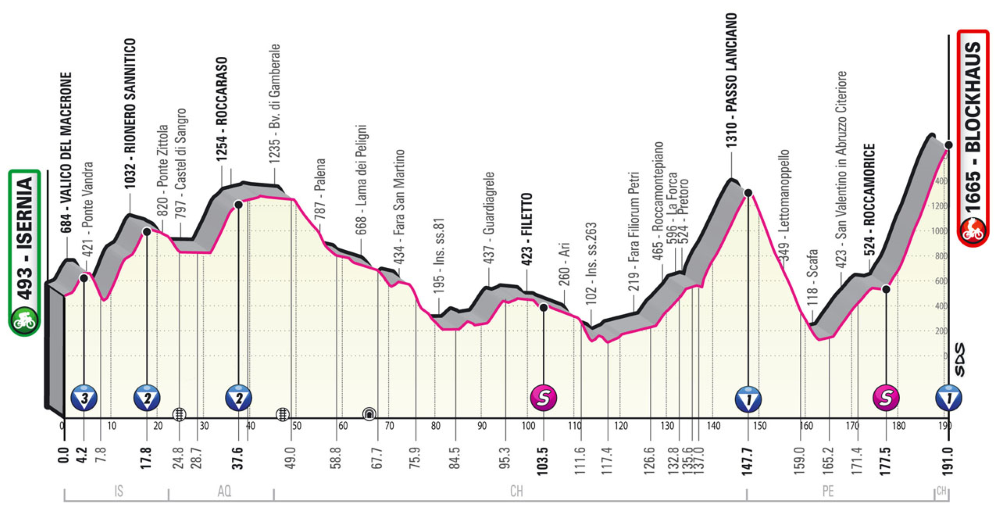
The first week ends with arguably the hardest stage in the whole Giro, doesn’t happen frequently it is on the Appennines. The Corsa Rosa will come back to Blockhaus from Roccamorice 5 years after Nairo’s show in 2017, but this time with a way more demanding previous parcours. Literally right from the gun the riders will start their climbing experience with the historic Macerone (4 km at 5%), quickly followed by Rionero Sannitico (9,1 km at 6,8%) and Roccaraso (6,8 km at 6,5%). The fight for the break will be fearce, fortunately we have live TV images from the start, it should be great. Watch out to the GC riders, someone will try. When the break is gone, calm should be back in the peloton, but not for much. Before the final fireworks, exactly in the middle of the stage, it will pass through Alberto Contador’s second favourite city, just behind Irun: Filetto. Steak in English. Majella massif will take the scene in the last 60 km, with a double ascent. Firstly Passo Lanciano from Pretoro, not the hardest side but still 10,3 km at 7,6%, a demanding warm up before the hardest MTF of this edition with its 13,6 km at 8,4%, with the last 10 km at 9,4%. You can’t hide there, we will see who can’t win the Giro. Perfect way to use stage 9.


STAGE 10 – Pescara > Jesi
196 ***


After the second rest day, it will be time for the “walls stage”, but just like in 2019 towards Pesaro it will be quite watered. After 100 km of flat on the Adriatic coast (again, remember, no echelons), the riders will reach the first climb of the day, 8,2 km at 2,7%. You can see what I mean with watered. Then it will time for the only real climb of the day, towards the city of Recanati, Leopardi’s town. It features 500 meters at 13,8%, with ramps up to 18%. A real muro marchigiano. Unfortunately the only one, as said. It will be topped with 70 km to go, followed by a continous terrain of up-and-down, but without real climbs. The peloton will pass through Filottrano in this section, Michele Scarponi’s hometown, it will surely be touching. The last option for the attackers will come just before the end, with 13 km to go. Monsano climb is just 4,2 km at 4,2%, easier than Visegrad ascent to make a comparison, with 1 km at ~7% in the middle. Difficult to go away if your name isn’t Mathieu van der Poel. A fast descent will lead to the finish line, preceded by only 1,5 km of flat, just slightly uphill.


STAGE 11 – Santarcangelo di Romagna > Reggio Emilia
203 km *

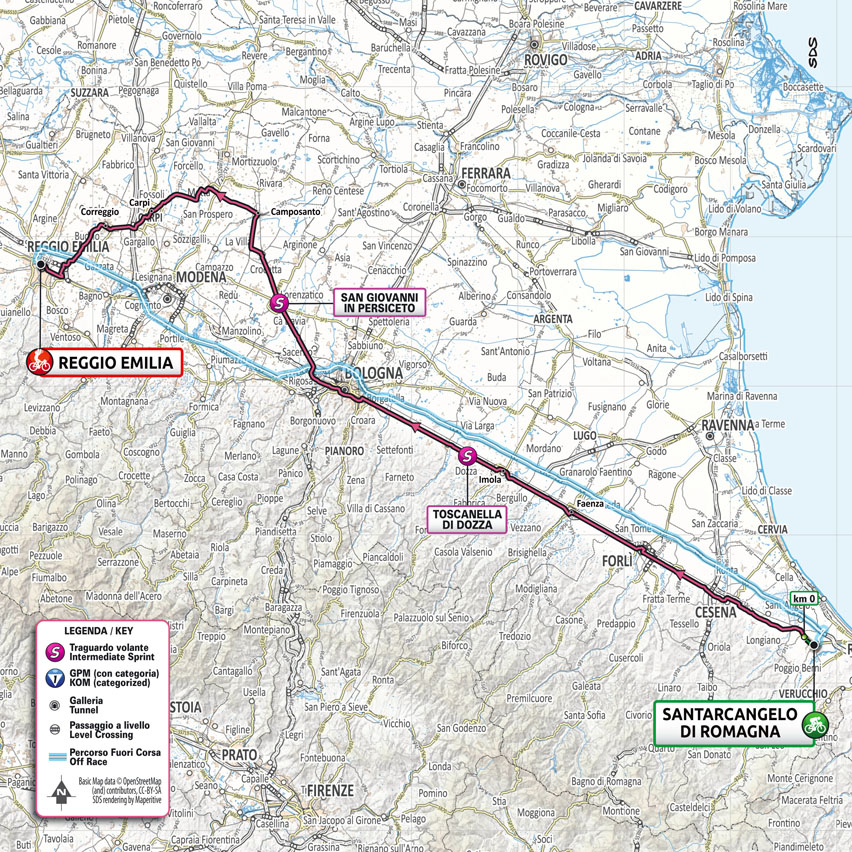
Total flat stage through Emilia-Romagna of… 203 km. Zero climbs, almost zero turns, zero everything. A nightmare. The finale will be the same used in 2017, when Gaviria won, with two gentle turns after the flamme rouge. Not much to say.
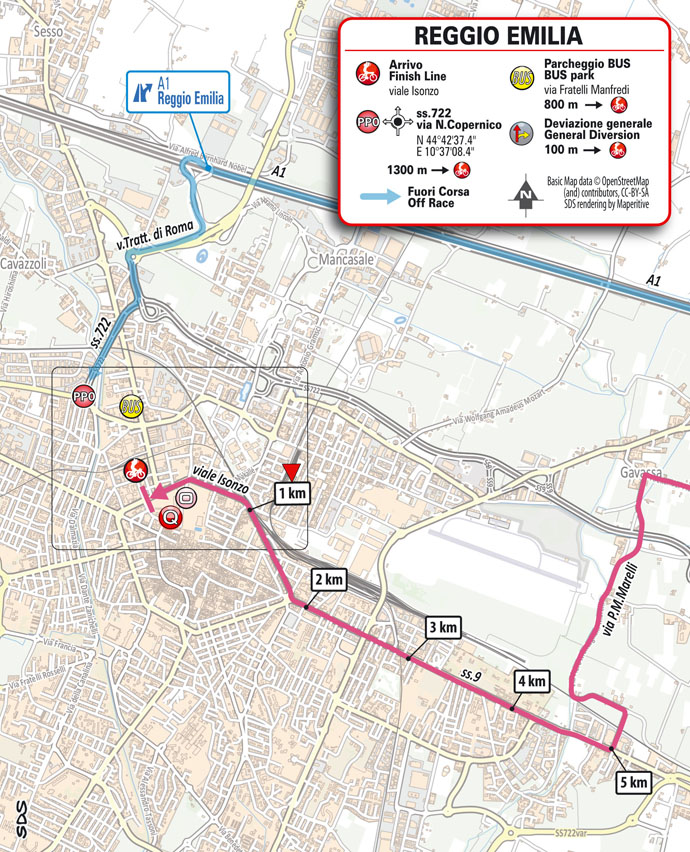
STAGE 12 – Parma > Genova
204 km ***
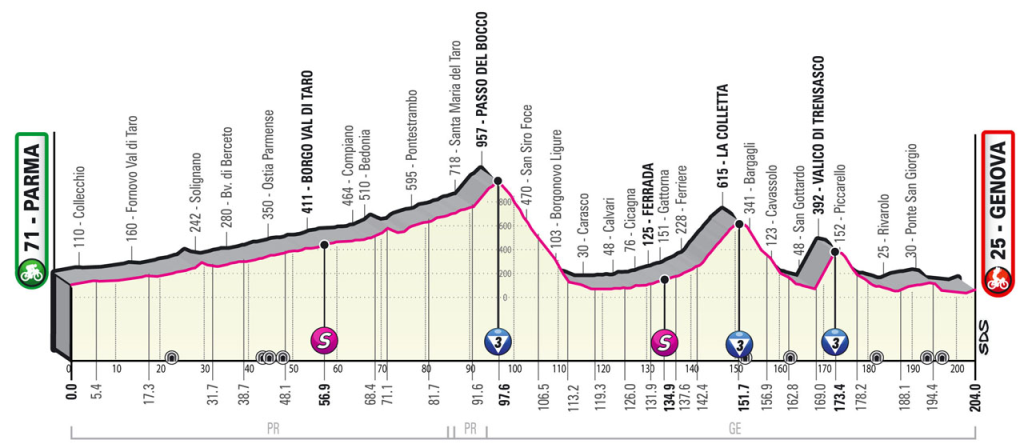
If Potenza stage was the representation of why we all love the Giro, this one perfectly shows all the problems of RCS. To understand what I’m talking about, just look below to see the original stage when the route was initially presented. That was really brilliant, one of the best designed of this edition, but they changed it without much talking. Officially the problem should be the descent of the Monte Fasce, dangerous and not well manteined, but, looking at the new parcours, one could think it was political choice: now they will pass through the new Ponte San Giorgio, the replacement of the old Ponte Morandi, tragically collapsed back in 2018, giving death to 43 people. A really bad strategy of political propaganda over a tragedy. This said, the route is good for a breakaway and still a bit demanding. The Corsa Rosa will come back on Passo del Bocco 11 years after the death of Wouter Weylandt, fell on its descent. La Colletta will be an appetizer for the clearly harder Valico di Trensacco (4,1 km at 8,4%), that will be topped with 30 km to go. Way too hard for the sprinters that shouldn’t chase a breakaway. The rest is flat, with even a passage on an highway, to let the peloton pass over the already mentioned bridge. The last kilometer will be slightly uphill, same finale of the famous classic Giro dell’Appennino, already used in the second stage of Giro 2015.



STAGE 13 – Sanremo > Cuneo
150 km **

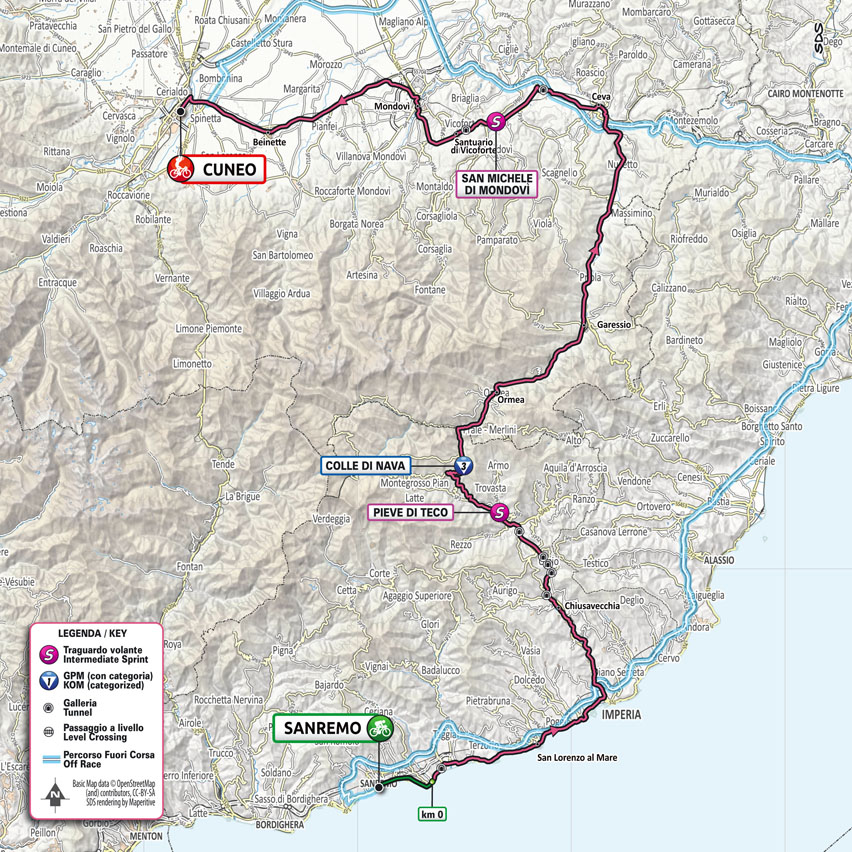
The peloton will start from Sanremo for yet another weird stage. The hard Colle di Nava (10,5 km at 6,6%), ridden in the opposite direction in the Covid edition of Milano-Sanremo, in 2020. It will be topped with 96 km to go, followed by a long flat way towards the finish in Cuneo. It could be used from the breakaway to take time over the peloton, but from from a tough sprinter too, to drop the others, in Sagan’s old fashon. Or could be just a slow cruise up it. The last 2 km are slightly uphill, at 2,2% of average. Not the steepest finish ever, but the sprint should be one of those in slowmo.
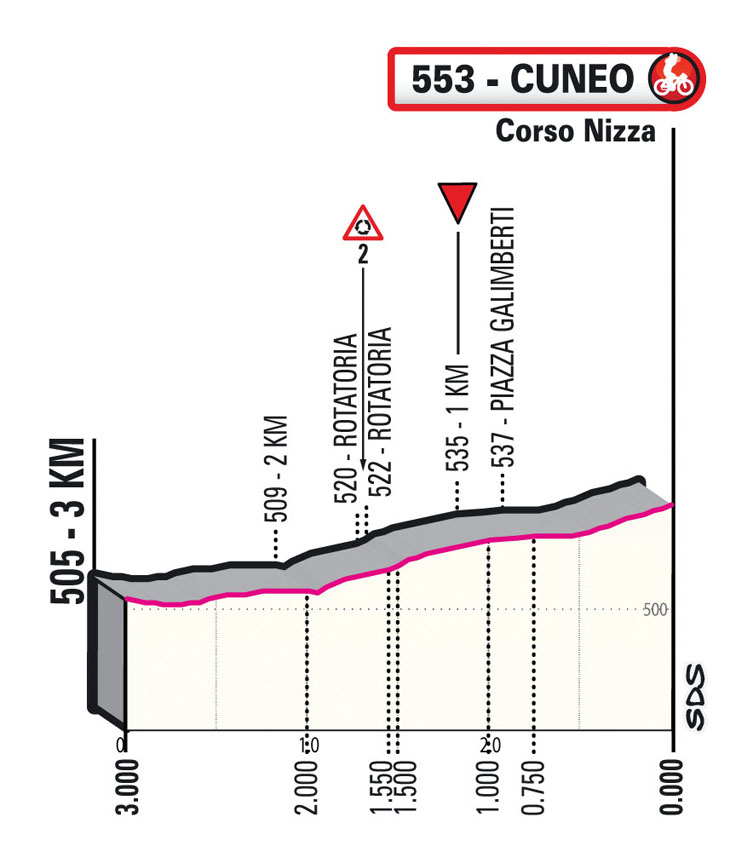

STAGE 14 – Santena > Torino
147 km ****

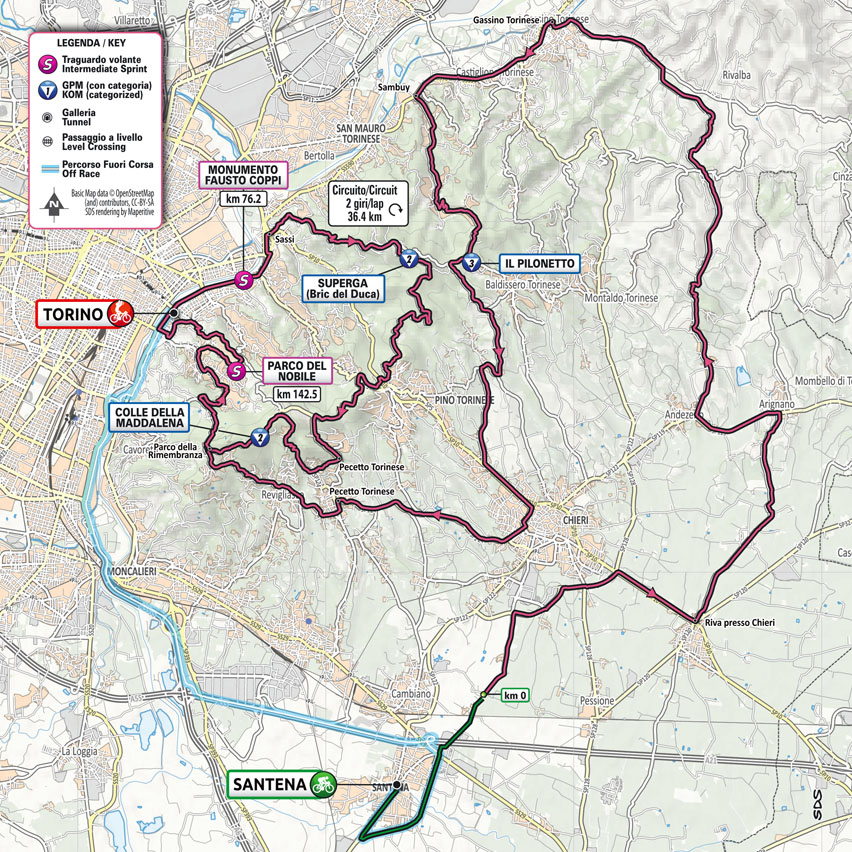
Another stage that has been modified, but fortunately it didn’t lose its identity this time, remaining one of the best routes of this Giro. 147 km packed of climbs with a circuit that has to be repeated two times. The approach will be demanding, but the race will really start on the first passage over Superga, the key climb of Milano-Torino classic (until this year’s disastrous edition, hope RCS will come back to the old parcours). 5 km at 8,6% are hard and the last it will be topped with 27 km to go, enough to try a long range attack. It will be followed, after 10 km of false-flat, by the steep Colle della Maddalena, 3,5 km at 8,1% but with the first 2 km at 11,6% and ramps up to 20%. Steeeep, perfect launch-pad for attacks, topped with 12 km to go. Fast and twisty descent towards the last difficulty of the day, the Parco del Nobile, 1,6 km at 7,5%, with an intermediate sprint at its top, just 4,5 km from the finish. This 36 km circuit is simply beautiful, perfect I would say, that will offer a great opportunity to the attackers. And if it rains, it will be a carnage. The only bad news is that the next day there will be a mountain stage, that could lead the GC guys to be more conservative. And it would be a real shame. That’s one of the worst points of this year Giro: the order of the stages, a key factor in every GT.

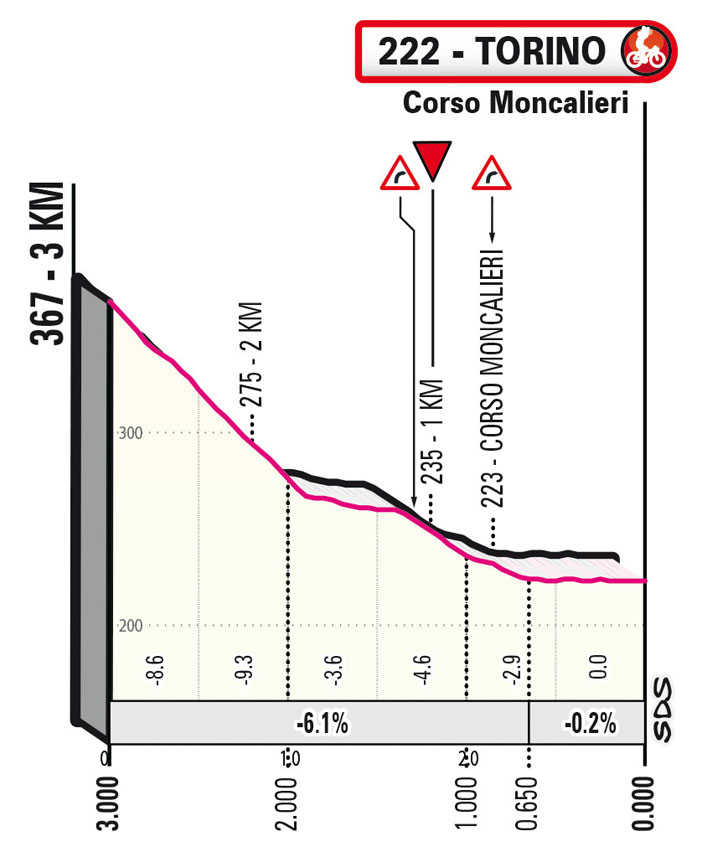
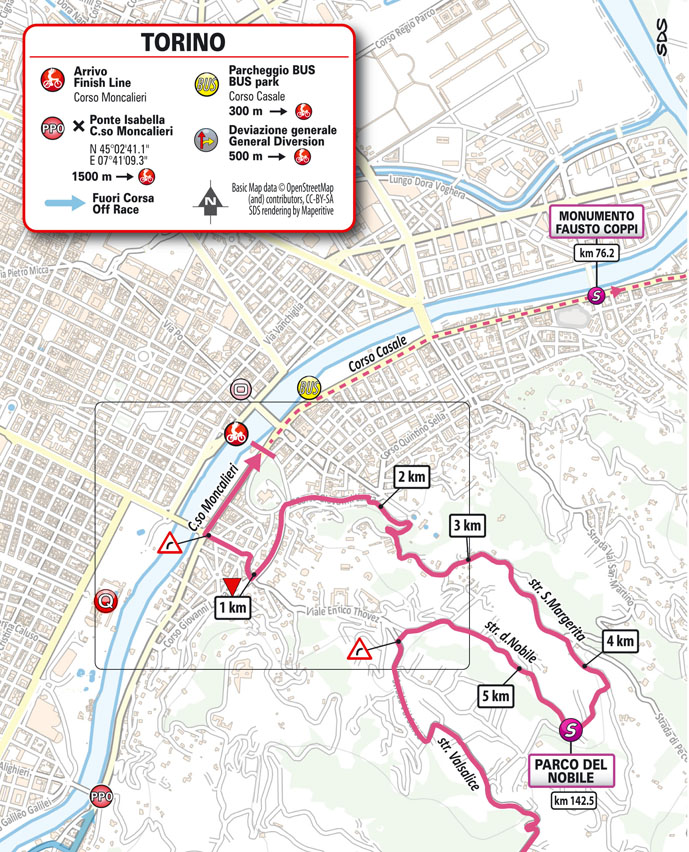
STAGE 15 – Rivarolo Canavese > Cogne
178 km ****

Stage number 15 and here comes the Alps. The peloton will head to Valle d’Aosta to takle the first Alpine passes on a pretty hard parcours that will close the second week. It would be a good day for long range attacks, because the final climb is the easier of the stage, but the absence of a real ITT before could cause less gaps between specialist and climbers, leaving the latters the possibility to be conservative. Remember the problems of this year Giro? Here they are. The route will be mostly flat until Pollein, where Pila climb starts. Nothing should happen there, but with its 9,7 km at 7,7% it will be a good warm up for the last 50 km of the race, where the fireworks should start. Then comes Verrogne. A climb already used in 2019, on a different road but weirdly with exactly the same numbers: 13,8 km at 7,1%. It’s really hard, with 5 central kilometers at 8,4% average and could offer a great opportunity for long range attacks as there won’t be much flat after. Even better, the descent is very technical, some brave rider could gain enough time before the final ascent towards the finish line. It’s a weird one. 22,4 km at 4,3% average, with the gradient that slowly goes down as they will go up, ending with a false-flat in the last 10 km. It’s almost an Aprica-style climb and that’s good, we have to hope they will use Verrogne as a Mortirolo, then the show could be great. If not, it could be a reduced sprint between the GC guys. Or a breakaway day.


STAGE 16 – Salò > Aprica
202 km *****

Presented as the queen stage, if you look at it you will easily see that something is missing. Could be the Mortirolo from its harder side (from Mazzo), could be the amount of flat between the climbs, could be hardest ascent of the stage just before the finish, but that’s not a good route in my opinion. Below you can see alternatives and some talks about the options organizers had. 30 km of flat before the first climb of the day: Golletto di Cadino, also known as Passo Crocedomini. If someone wants to try from far later, he has to put some teammates in the breakaway there. Watch out to the descent, is steep and pretty technical, could give some surprises, moreover if wet. A long valley will lead the peloton to Edolo, where the Mortirolo starts. This time it will be climbed from its easiest side and it’s quite a shame, because in this position it would have been perfect to attack from far. Using Mazzo side, but the other Edolo side too. But we will talk about it later. It’s still a demanding climb with 12,6 km at 7,6%, but not enough to scare. The descent is again really technical. And yet again a long valley will wait the riders, before hitting the last climbing sequence. First comes Teglio (not classified as GPM, usual crazy categorization from RCS), with 5,1 km at 9%, but almost useless in my opinion, no one will attack there. Then comes Valico di Santa Cristina, the real star of this stage. And that’s its problem. The last climb will be the hardest, everyone should wait for it wasting the supposed queen stage sitting in the bunch. It will be the first time ever we get to see the whole climb, as it has always been used from midway, coming from Aprica’s descent, in the famous Merano-Aprica 1994 (profile – video), surely one of the greatest stages in the history of cycling, Pantani cracked Indurain there, and in the Madonna di Campiglio-Aprica in 1999 (profile – video). The added 5 km have an average gradient of 7,1%, just a warm up before the last tremendous 6,5 km at 10,1%. The top is positioned at just 6,2 km from the finish line, ~4 km of fast descent, so it’s almost a MTF. The last kilometer is on the main road of Aprica, as always. It’s a key stage, really hard and coming for the rest day could also be a factor.



Alternatives. There were a lot of ways to make this stage better. I will show you two now. The first that comes to mind is to use the Monno side of the Mortirolo, but from the Dritta di Monno (profile), also promoted as Recta Contador. Some years ago it has been super hyped from Vegni, former Giro director, but never used and it’s a pity because this year it would have been perfect. 9,8 km at 9,8% vs the orginal 12,6 km at 7,6%, and above all a terrorific section of 3 km at 13,5% would have destroyed the race, leaving a great opportunity to the attackers. But RCS decised otherwise.


The best option would have still been to use the usual Mazzo side, preceded by Aprica and then followed by the shorter version of Valico di Santa Cristina. This would have been a real queen stage, something to really talk about. A missed opportunity. Below the profile of what would have been the route, made with cronoescalada’s editor.

STAGE 17 – Ponte di Legno > Lavarone
168 km ****
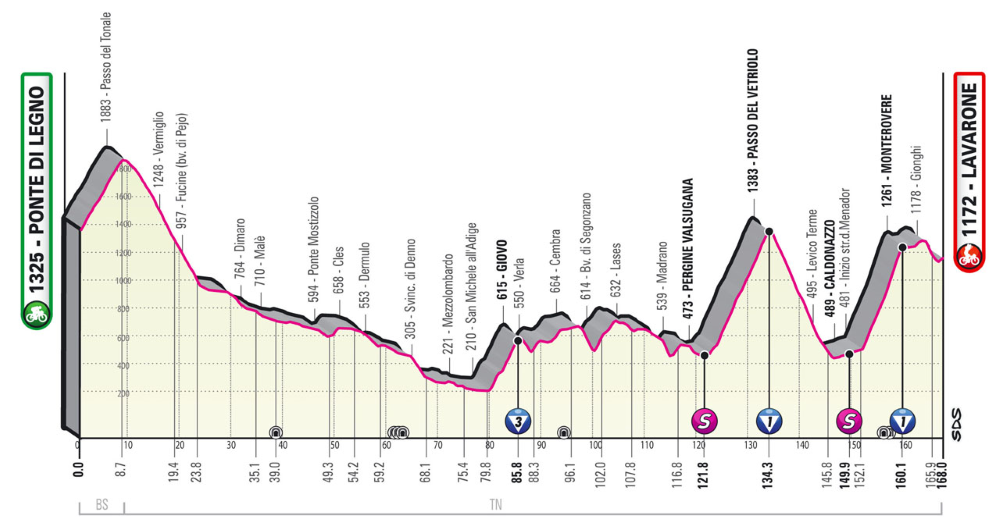
If the previous day left huge room for improvement, this stage is simply beautiful, with enough ingredients to see a great show from the riders. It will start with a bang, the last 8,7 km of the Passo del Tonale, at 6,4%, a furious beginning for the peloton surely, as half of the peloton will think to go in the breakaway. The next climb will come halfway the stage, with Giovo ascent, the hometown of Francesco Moser and Gibo Simoni. Rather steep, will be followed by continous up-and-downs, that would be great terrain for attacks. With 46 km to go the final sequence will start, with the demanding Passo del Vetriolo and its 10,1 at 8,3% average, perfect to try from far. Everyone will be tired after the previous day, someone will want revange and this is the perfect launch-pad. The descent is fast and technical and there will be just 5 km of flat before the start of the next climb, the last of the day. Menador is a steep climb, 7,9 km at 9,9% are serious numbers, at this point we will know who is the strongest climber of the race. The top will come with 8 km to go, so if one has the legs could even gain more time putting the big ring and the homme au marteau over his rivals. That’s a great stage, not too hard to scare the riders, well designed to give the braves a huge opportunity.

STAGE 18 – Borgo Valsugana > Treviso
152 km *
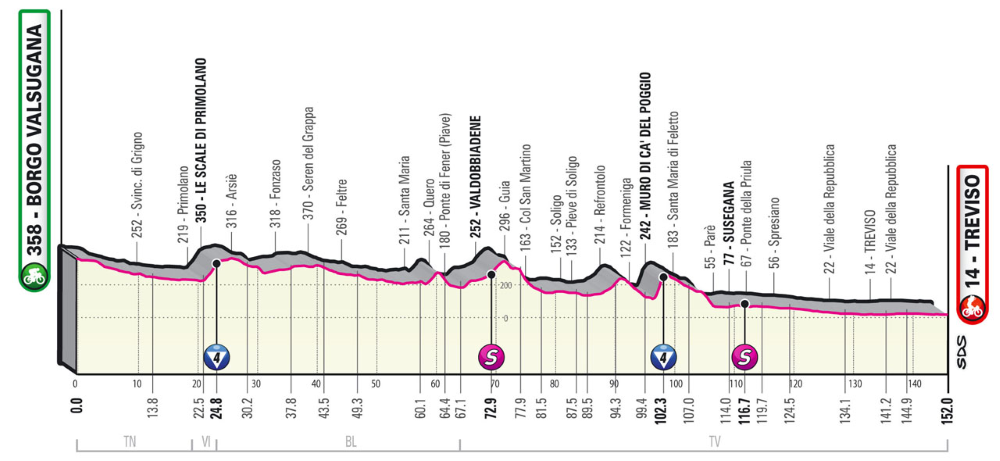
That’s the last opportunity for the sprinters, but how many there will be left in the peloton? The legs and the numbers will decide the faith of this 18th stage as it could be yet another option for the breakaway. The general slightly downhill will make it fast, but Muro di Ca’ del Poggio (1,1 km at 12,3%) will force the sprinters to slow the chase if they don’t want to go in red. Topping with 50 km to go, there is enough time to recover, but it could be nice. Or boring. Coming in Treviso, the riders will pass a first time over the finish line to takle an 11 km circuit around the city. As it’s not very twisty, it shouldn’t be a problem for the peloton.


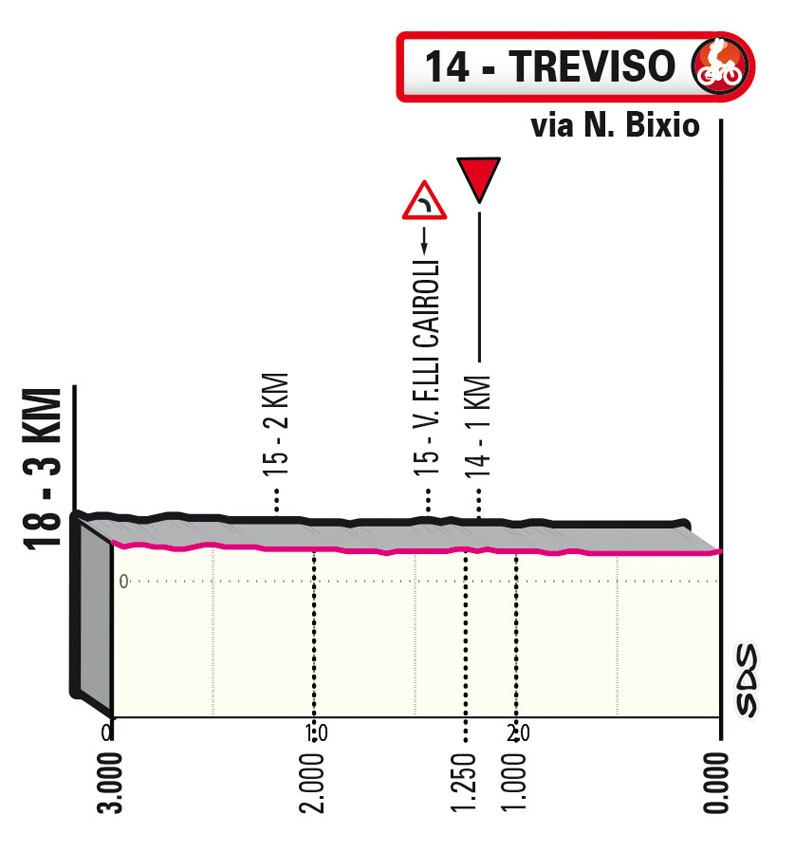
STAGE 19 – Marano Lagunare > Castelmonte
177 km ****
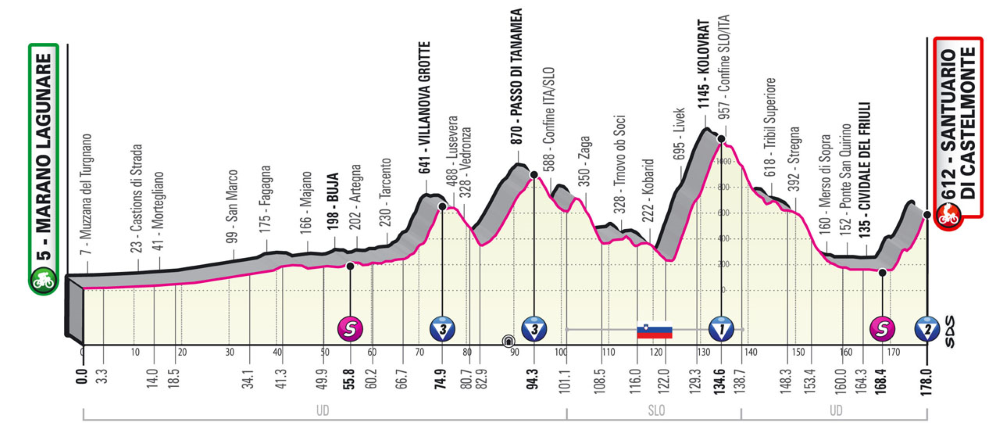
Another brilliantly designed stage, arguably the best for tactic games and long range attacks. Just a shame it comes before the fin de fiesta on a really hard MTF as Passo Fedaia, this could block the race, even if the next stage is badly designed that the riders could be forced to not waste this one. After a long flat run, that should be ridden at furious pace, as most of the peloton will try to go in the breakaway, the riders will hit the first ascent of the day, Villanova Grotte. 3 km at 8,6%, that’s quite a good warm up. It will be quickly followed by Passo di Tanamea, way steadier. This section will be key because if a leader will want to attack from far later, he must sent at least one teammate at the front of the race, in order to help him in the 13,5 km valley section between the last two climbs. That’s where the Giro could be decided. But we will talk about it a few lines below. The race will pass in Kobarid, Caporetto in Italian, theatre of the biggest defeat of the Italian army in WW1. The pink jersey will pray to don’t have the same faith. On a political note, RCS keep visiting nationalistic places in a clear agenda, as said at the start of the analysis. Kolovrat is arguably one of the hardest climbs of the whole race, 10,3 km at 9,2%. The riders will reach it 54 km from the finish line, it would take a lot of bravery to go all out there, but tactically it could be the game changer of the 105th Corsa Rosa. It’s freaking hard, number teammates would not be a factor there, so they must try. The descent is very technical but not so steep, this is where an attackind leader would need a teammate to be out on the front. The valley could really make the difference if the race exploded, just like in Risoul 2016 stage (profile – video), where Scarponi, may he rest in peace, was the key factor in Nibali’s final win. The end of the stage is positioned just above Cividale del Friuli, that already hosted the finish of a great stage back in 2016 (profile), and is hard enough to make some damage, but not enough to scare the attackers. I have very high expectations on this stage, even if with a flat ITT before and anything but an hard MTF the next day, it would have been even better. Up to the riders.
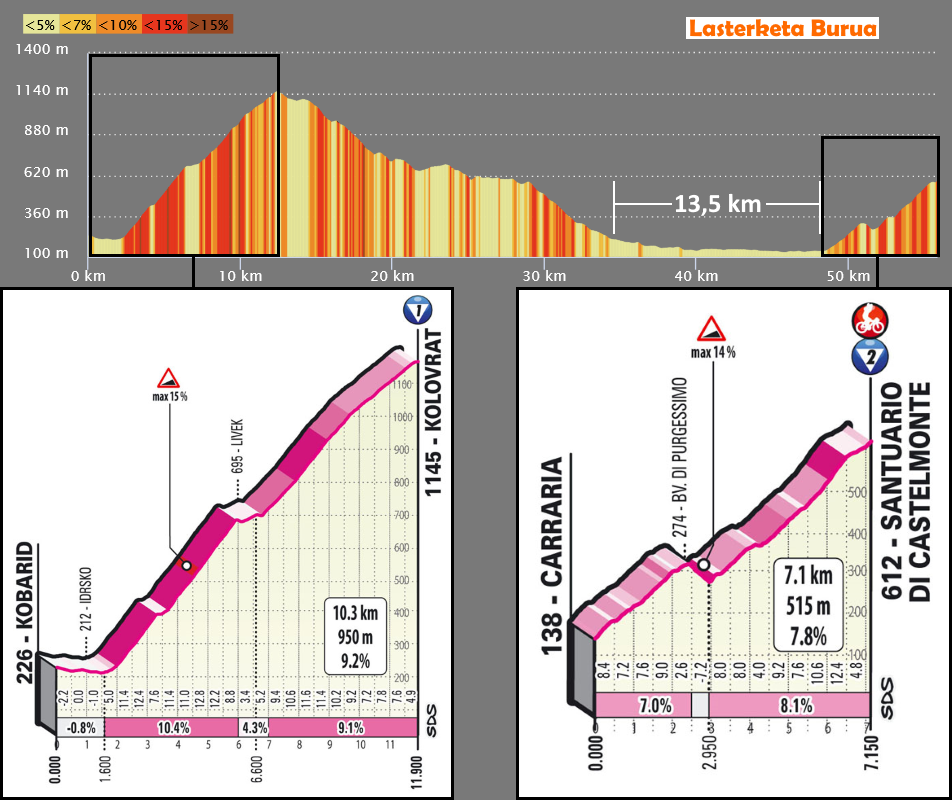
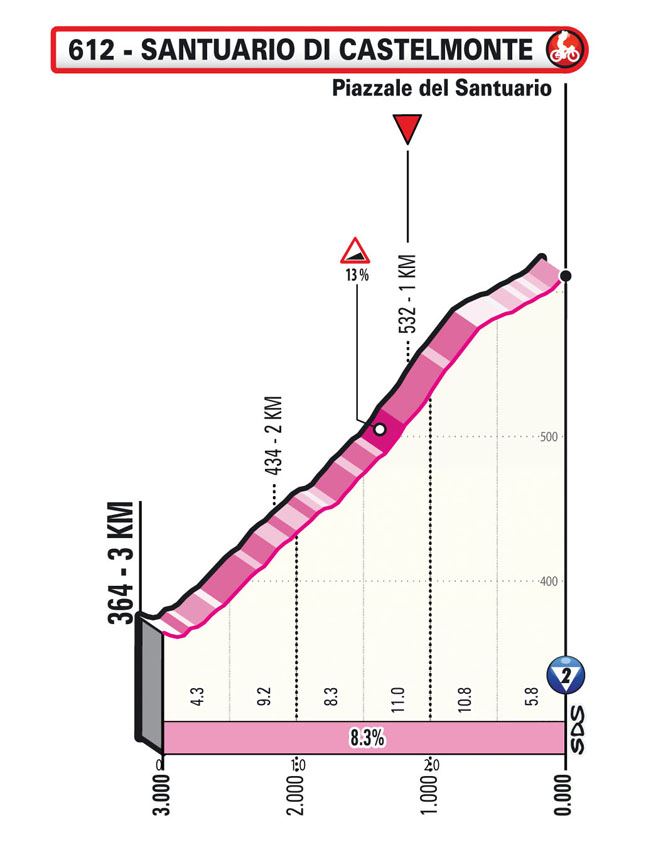
STAGE 20 – Belluno > Passo Fedaia
168 km *****

And yet another problem of this Giro d’Italia. The ones who know me, will understand how much I hate the fin de fiesta, Spanish name for the trend used and abused by the Vuelta a España, that for years kept putting an hard MTF on the 20th stage, usually causing a blocked race as everyone was waiting for that final opportunity. And this stage is a total disaster. Using a great mountain pass a the Fedaia is already a huge waste, putting it the final mountain stage is simply tragicomic. Passo San Pellegrino will be the first difficulty of the day and its last 6 km at 9% would be interesting, but the peloton will probably go up just cruising them. Then it’s up to the Pordoi, a very steady climb, the Cima Coppi of this edition. No one would ever attack there with Fedaia after. A little bump of 1,5 km at 6,5% will interrumpt the descent before reaching Caprile. Unfortunately the old beautiful street of the Serrai di Sottoguda are still closed after the tragic floods of 2018 and that’s a shame, not only for the views, but because the climb would have been harder too (profile). In 2000s it has been used only once as MTF, back in 2008, with Emanuele Sella’s epic raid (profile – video), and there is a reason: it’s one of the best passes of Italy, always destroyed the race when used far from the finish. And here comes RCS. Shame. Not much to say about the climb if not that’s really hard, the last 5,5 km at 11,1% average. The stage winner will be decided there.
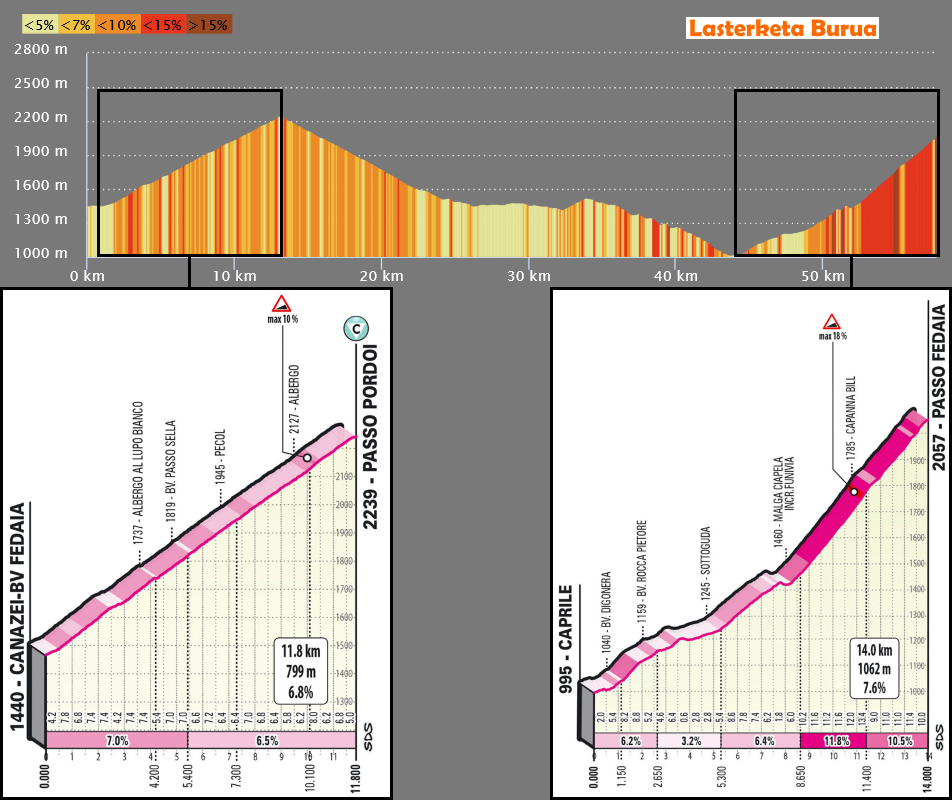
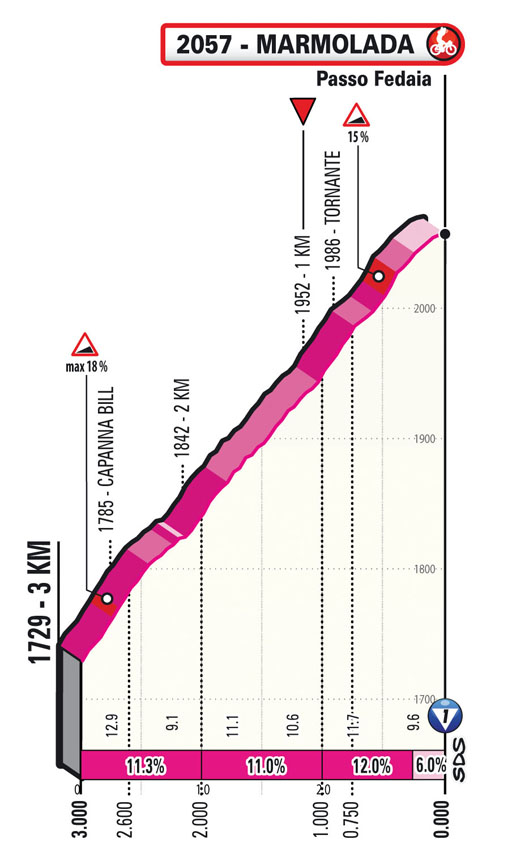

Alternative. It would have been very easy to design a great 20th stage, just by adding another passage on the Passo Pordoi after Passo Fedaia. It’s a pair that always delivers, already used in the past by the Giro (in 1996 – profile, video; in 2001 – profile, video), the stage would have been 193 km long and a way better end of the Giro d’Italia. It’s really a pity. Below the comparison.

STAGE 21 – Verona ITT
17,4 km ***
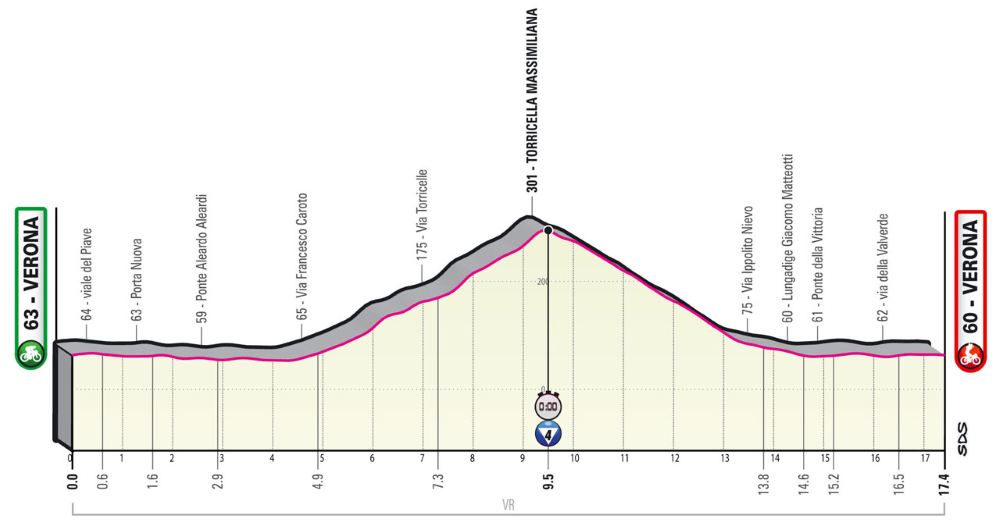
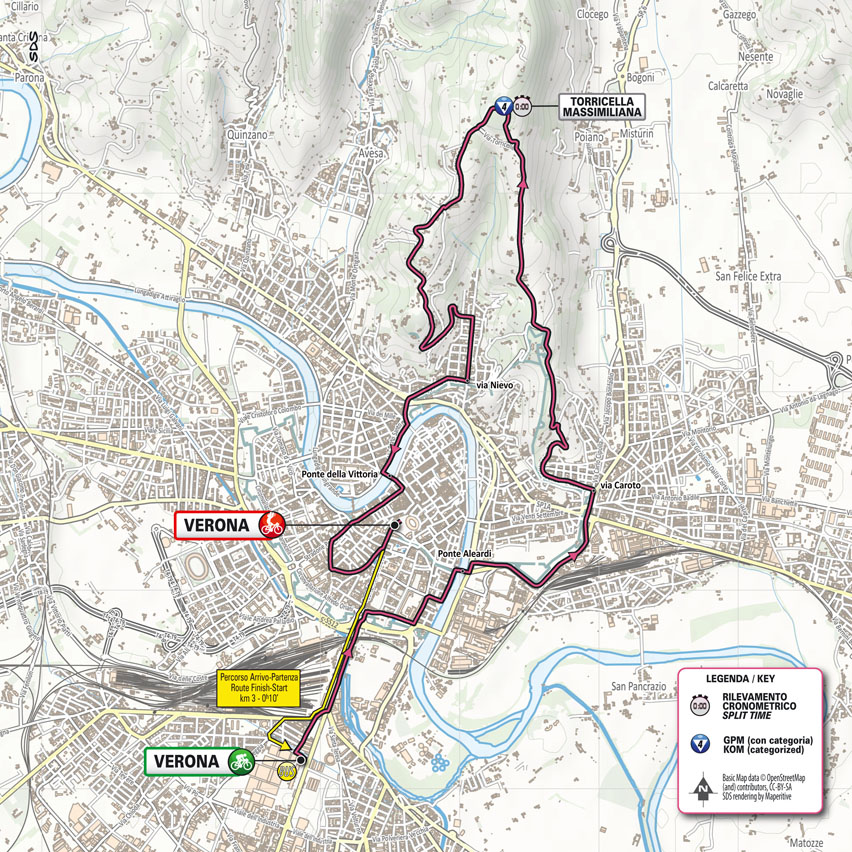
I’m not a fan of the “long” ITT being the last stage of the race neither. It’s all totally wrong. There is much hatred againts ITT from the fans, but a long and flat one in the middle of a GT always helps open the gaps, forcing the climbers to attack from far. Less gaps don’t mean great entertainment. The Corsa Rosa will finish in Verona for the second time in the last 4 editions after 2019 and the route is almost identical, just 400 meters longer. 9 km of flat with the usual Torricelle climb, used in 1999 and 2004 in the World Championships, in the middle. Not super good for pure specialists, the gaps will be small.

Raffaele Filippetti (@raffilpt)

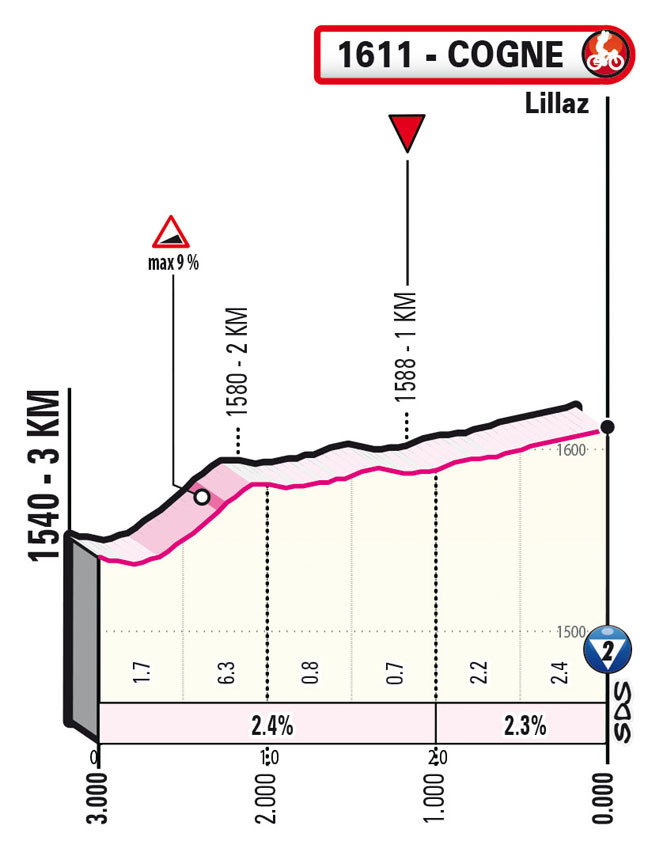
Pingback: Tour de France 2022 route stage-by-stage – Lasterketa Burua